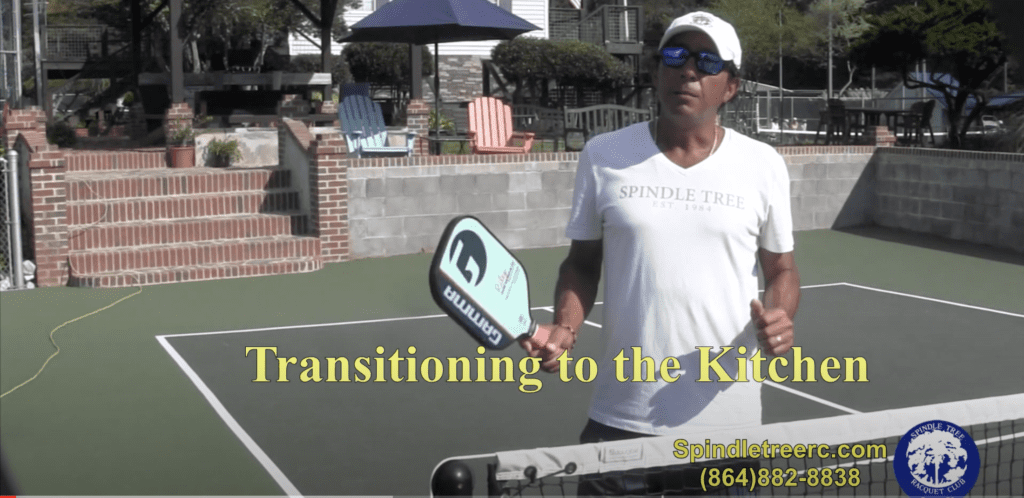This is a short video for the beginner or intermediate pickleball player on how to transition to the kitchen — or non-volley zone — strategically, presented by Seneca SC Spindletree Racquet Club.
Here are the main takeaways from the video:
1. Don’t rush to the kitchen until you evaluate your shot.
2. Be prepared to split step and stop.
3. If you hit a quality deep return, you can now advance all the way to the kitchen.
4. Make sure your base is wide and low when approaching the kitchen area.
Although these might seem like elementary principles of the way one is supposed to approach the kitchen line in pickleball, you rarely see beginners or intermediates do it this way. First of all, for some reason, most of those starting out in the sport believe they should charge the net no matter what. This simply is not true. You must be strategic as to when to move to the net. Second, too many beginners and intermediates tend to charge through the incoming ball, trying to hit it while they are moving forward, instead of stopping, hitting the ball, then moving forward. Third, although we teach our students to hit deep shots so the opponents cannot get to the kitchen so quickly, this is not an easy shot to hit, so instead of waiting to determine the quality of their shot, too many players simply barrel in towards the kitchen without seeing where their shot is landing on the other side of the net. This is not a good strategy. Finally, too many players, while moving toward the kitchen, stand upright instead of in an athletic position, wide and low to the ground.
So there is a lot to unpack from this brief video, which you can watch here. I suggest watching it carefully a few times. The instructor shows you the right way to approach the kitchen, and if you can imitate what he is doing, you will quickly become a better pickleball player.
ABOUT THIS BLOG
All the posts in this blog are meant to add meaning and value to my books., which include dozens of videos with extensive commentary and explanations. But, as you can imagine, pickleball play is changing on a daily basis.: new doubles strategy, new ways to teach the many strokes, new equipment including paddles and shoes, new third shot options, and so much more.
This blog post on approaching the kitchen line is part of a whole series of lessons in both of my books, Pickleball for Beginners Part I and II, which focus on where to stand and where to move in doubles. To play the right way, you must master these intricacies of the game.
